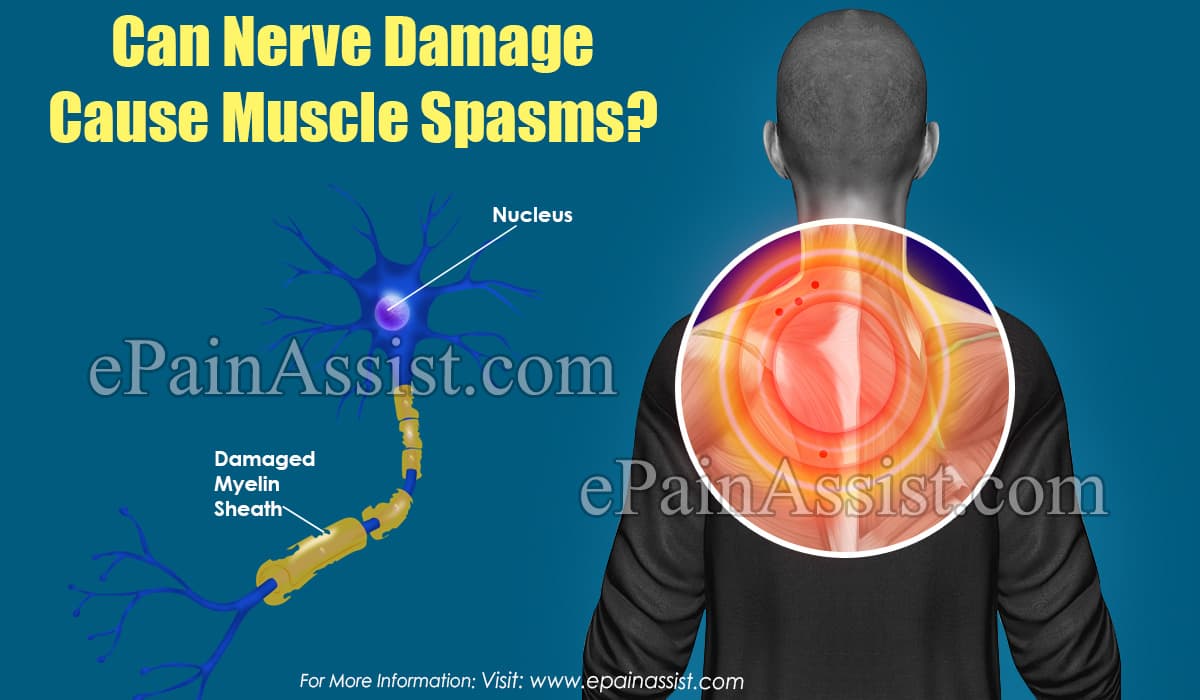A human body is composed of three types of muscles, cardiac muscles, skeletal muscles, and smooth muscles. Skeletal muscles are attached to the bones with the help of collagen they are responsible for voluntary actions. The muscles contract and relax upon instruction from the brain. They help in performing daily activities. Muscle spasms happen in skeletal muscles. The contracted muscle does not relax. This is an involuntary action and can happen in thighs (quadriceps and hamstring) and calves (gastrocnemius).

Can Nerve Damage Cause Muscle Spasms?
Spasms can be felt as legs twitching or shaking, these are involuntary muscle movements.1 Nerve damage is one of the leading causes of muscle spasms, which results in physical disability. Multiple sclerosis, spinal cord injury, amyotrophic lateral sclerosis and diabetic neuropathy are some of the diseases wherein nerve damage causes muscle spasms.
The muscle spasms which long last are called as muscle cramps. There can be many reasons for muscle spasms. Kidney problems, thyroid disease, diabetes, and anemia can result in muscle spasms. Disorders related to nervous systems such as amyotrophic lateral sclerosis, multiple sclerosis, or spinal cord injury, are also associated with muscle spasm.
Multiple Sclerosis. This is an autoimmune disorder characterized by the loss of protective myelin sheath over the neurons present in the cerebellum.2 As there are gaps in the nerve fibers the information cannot be transmitted smoothly. The exposure of the nerve due to lack of myelin can even result in permanent damage to the neurons. The initial symptoms of multiple sclerosis are movement disorder; there will be unsteady gait and lack of balance. There will be involuntary muscle spasms due to neuronal damage. There is no treatment for MS, physical activity and stretching can be helpful in relieving symptoms. Spasticity can be reduced by taking medicines.
Amyotrophic Lateral Sclerosis. It is a neurodegenerative disorder where the motor neurons get affected. These muscles are responsible for performing daily activities.3 It mostly affects muscles of the arm, legs, neck and diaphragm. The symptoms become prominent when individuals are unable to perform daily activities. People suffering from ALS find it difficult to stand or walk and ultimately their activities are reduced to nil. ALS patients have a high metabolic rate and hence they tend to reduce weight. Muscle spasms are common. The muscles start to shrink and become stiff. There will be difficulty in swallowing resulting in salivation and difficulty in speech.
Spinal Cord Injury. Spasms are usually prevented through the reflex mechanism of the brain. Spinal cord injury in the cervical or thoracic region prevents reflexes and the transmission of information is interrupted. There will be the impaired transmission of impulses which results in muscle spasms and twitches. Spasms due to spinal cord injury are most prevalent in the morning as the body was in the resting phase for a long period and decrease gradually as the day progresses. Spasms occur when the spinal cord is recovering after an injury
Diabetic Peripheral Neuropathy. Diabetes is a condition characterized by high blood sugar. This increased blood sugar has adverse effects on different parts of the body including nerve damage in hands and legs. It can result in muscle cramps (Muscle cramps are prolonged muscle spasm). It is a serious medical condition and requires immediate medical attention to avoid amputations.
The other causes of muscle spasms can be dehydration, electrolyte imbalance, muscle fatigue, and over-exercise.
Depending upon the underlying disease various medications are prescribed. These medicines can be given orally or injected through a device in the spinal cord. The spinal injections are highly effective in controlling spasms and are required only in the small amount of dose. The goal of the treatment is to prevent physical disability and improve quality of life. Spasms generally do not require any medical attention unless it affects the routine. Performing stretch and motion exercises and having a well-balanced lifestyle can help in preventing muscle spasms.
Also Read:
